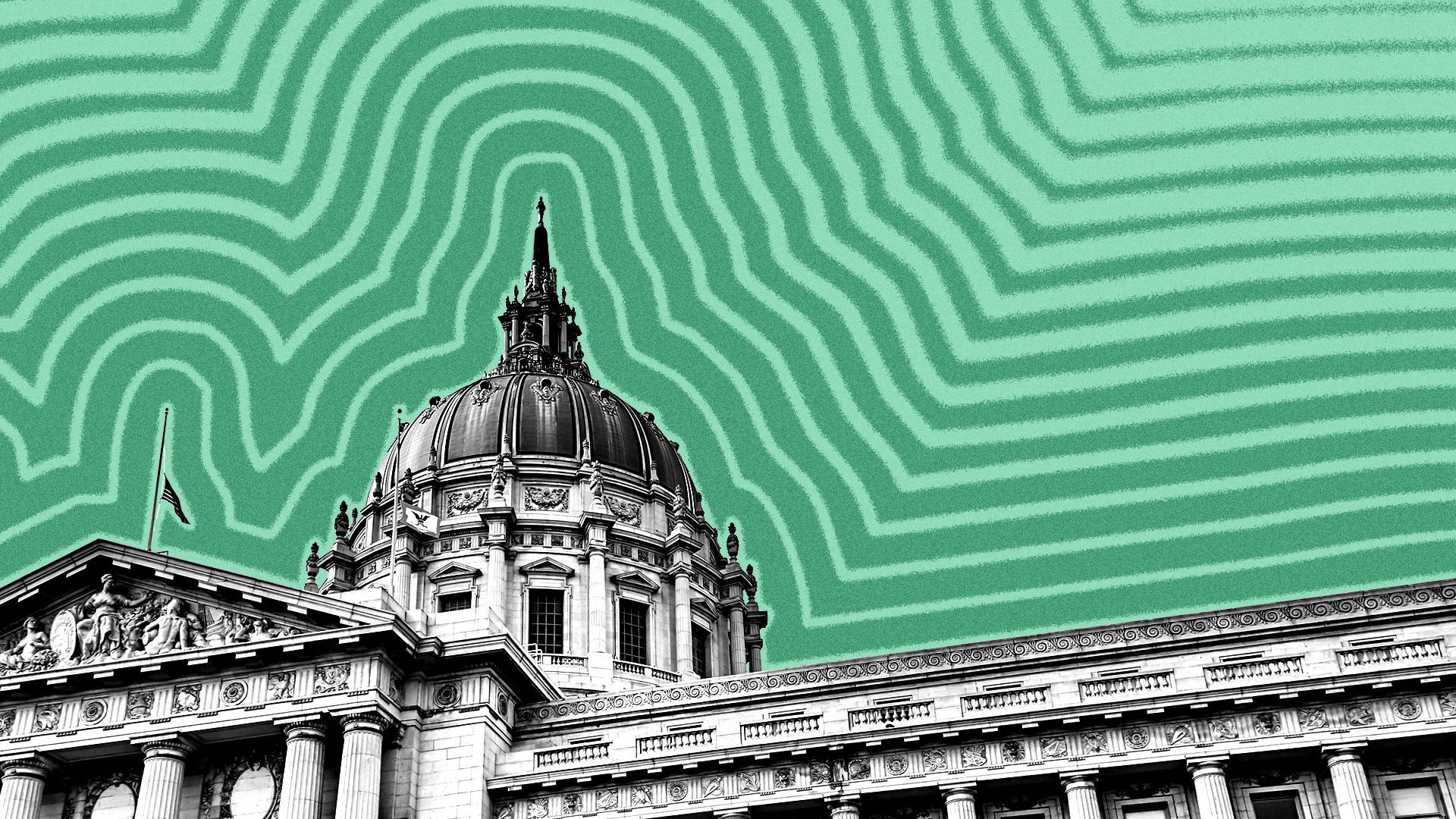
Illustration: Brendan Lynch/Axios
Dozens of lesser-known recommendations from the city’s reparations committee aim to make amends to a Black community that has faced historical displacement and discrimination.
Driving the news: A proposed plan to give $5 million to people has received the most attention, but the list of potential actions includes more than 150 recommendations. Among them: the creation of an Afrocentric K-12 school.
- The committee also wants to see the inclusion of at least one formerly incarcerated person on the police commission and a requirement for large retailers to dedicate shelf space to Black retailers, according to a 398-page report released last week.
- The report, submitted by the San Francisco African American Reparations Advisory Committee and prepared by the San Francisco Human Rights Commission, includes recommendations across economic empowerment, education, health and policy.
- A vote regarding whether to implement any of the recommendations is expected later this year.
What they’re saying: “The city’s government has the opportunity to take steps that redress the discriminatory actions taken to violently displace, limit political participation, invisibilize, restrict the physical and financial mobility of, and otherwise harm Black people across San Francisco,” the report states.
- While San Francisco did not institute chattel slavery, the report states, “the values of segregation, white supremacy, and systematic repression and exclusion of Black people were legally codified and enforced.”
The other side: Mayor London Breed, however, “believes that reparations is an issue best handled on the national level, including payments to individuals,” Noel Sanchez, a spokesperson with the mayor’s office, told Axios via email.
- Yes, but: Breed’s office will review the report “to understand what is included, and will work to implement policies and programs that deliver on that commitment.”
Catch up quick: In 2020, District 10 Supervisor Shamann Walton wrote the unanimously approved legislation to establish the reparations committee, which comprises 15 members appointed by the Board of Supervisors.
The big picture: The city is trying to atone for previous actions that ultimately led to a lack of opportunities and displacement of a portion of the city’s Black population.
- San Francisco’s urban renewal of the 1960s and ’70s, for example, decimated the Black population in the Fillmore District, an area once known as the Harlem of the West due to its bustling jazz scene.
Zoom out: In June, California’s reparations task force released its final report detailing how the legacy of slavery continues to harm Black people and how lawmakers should make amends to those who can trace their lineage to chattel slavery in the U.S.
- The task force made more than 100 recommendations to the state Legislature, including returning property that was unjustly seized from Black residents, banning cash bail and paying Black Californians who resided in the state while specific discriminatory policies were in effect a to-be-determined amount of money, the Associated Press reports.
What’s next: City supervisors are set to discuss the reparations at a regularly scheduled board meeting on Sept. 19.
- The board and the mayor will ultimately decide if the city will implement any of these recommendations.


